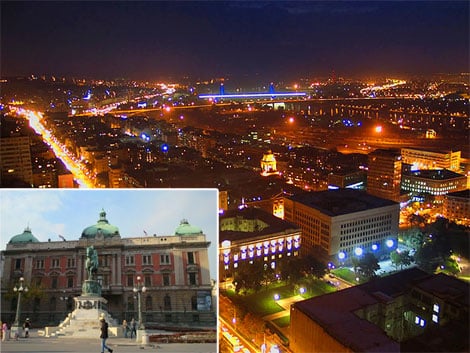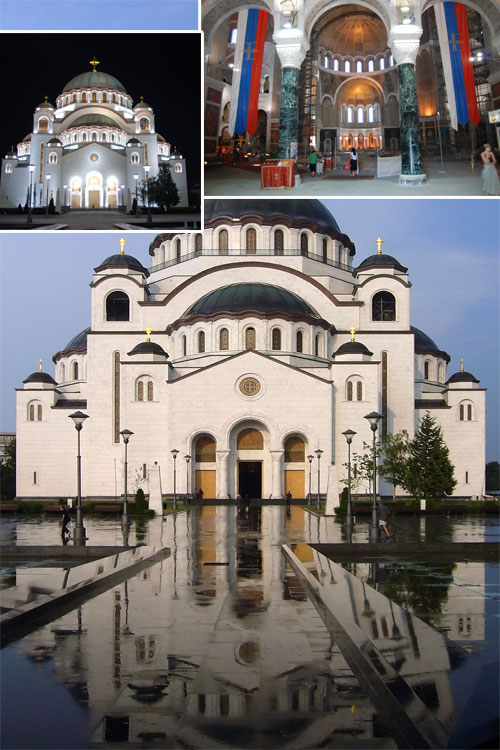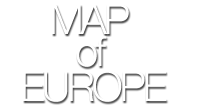Not one to deny its tumultuous past, the Serbian capital of Belgrade is putting its troubled decades behind it and emerging as one of the most up-and-coming cities in Europe. Situated at the joining of the Danube and Sava rivers, Belgrade has a history dating back nearly two and a half thousand years. Long the epicentre of Serbian culture and power, Belgraders will be the first to acknowledge that the twentieth century wasn’t overly friendly to the city. From the communist regimes in the years that Belgrade served as the capital of Yugoslavia to the now-infamous presidency of Slobodan Milošević,  Belgrade is certainly no stranger to adversity. However, with the 21st century came a new era of freedom and prosperity for Belgrade and Serbia as a whole, and the tribulations of the past have only served to strengthen the character and uniqueness of both the city and her citizens, and today Belgrade enjoys the status of being one of the premier economic and cultural centers of south-eastern Europe, and a travel destination not to be missed.
Belgrade is certainly no stranger to adversity. However, with the 21st century came a new era of freedom and prosperity for Belgrade and Serbia as a whole, and the tribulations of the past have only served to strengthen the character and uniqueness of both the city and her citizens, and today Belgrade enjoys the status of being one of the premier economic and cultural centers of south-eastern Europe, and a travel destination not to be missed.
The city population of Belgrade is over 1.5 million people, making the city a bustling metropolis. Sightseeing opportunities abound all across the relatively compact city center of Belgrade, making it easy and convenient to walk nearly anywhere you need to go. Republic Square is located directly in the middle of the city, making it a natural starting point for your Belgrade expedition. You will notice an interesting blend of architecture throughout the area, with ornate buildings dating back many centuries at odds with the Soviet-esque, brutal block-style buildings that are the legacy of rule during the twentieth century. Belgrade is a city of grand squares, and indeed many of these are in and of themselves an attraction. Should you need to venture out of walking distance, the area also features a popular tram system. Navigating the city is also easier than it may first appear to be, and English is commonly spoken throughout the city, especially by younger Belgraders.
<The most important ancient monuments in the city can be found on the grounds of Belgrade Fortress. While there has been a fortress in one form or another on the grounds since the third century BC, the site we see today was originally constructed by the Byzantine Emperor Justinian I in 535 A.D., the fortress is located in the center of Belgrade in a beautiful, expansive park located directly at the confluence of the Saka and Danube rivers. The most well-preserved section of the fortress is called the Kalemegdan Citadel, and is the focal point of the grounds. For many centuries, the whole of Belgrade existed within the walls of the citadel, and it remains a major landmark for the city to this day. Continuing the rich historical offerings of the city are the Serbian National Museum, which houses hundreds of thousands of works of art from both Serbian and Western European artists including Renoir, Monet, Van Gogh, and Picasso. However, if you’re after something more local, the Historical Museum of Serbia, located next door to the country’s National Assembly, has the world’s most expansive collection of Serbian art and historical artifacts dating back more than two thousand years. If that isn’t enough, travel to Belgrade would not be complete without a trip to St Sava Church, the largest Eastern Orthodox church in the entire world.
Belgrade also features some of the tastiest food in south east Europe. Carnivores can rejoice in the ubiquitous Burek, which are pastries that include anything from meat and cheese to vegetables and fruits. Also not to be missed is ćevapi, which are packages of minced meat which are grilled street-side and spiced to taste. Belgraders also have a love of good beer and wine, and travellers will be very pleased with the price of delicious, Serbian-brewed lagers available all across the city. When at a pub in Belgrade, it is quite common and accepted to look your companions in the eye as you clink your glasses and let out an enthusiastic “Živeli!” (Cheers). Belgrade also has a booming and historic cafe  culture, which is most evident in the quaint and remarkably picturesque Bohemian quarter of Skadarlija, whose cafe and artist-lined streets have often been compared to similar districts in Paris and Prague. The entire neighbourhood is pedestrianized as well, only adding to the timeless quality of the winding, cobblestone streets.
culture, which is most evident in the quaint and remarkably picturesque Bohemian quarter of Skadarlija, whose cafe and artist-lined streets have often been compared to similar districts in Paris and Prague. The entire neighbourhood is pedestrianized as well, only adding to the timeless quality of the winding, cobblestone streets.
It is often said that the hottest fire forges the strongest steel. In no place is this more apparent than Belgrade. The character and uniqueness of the city, combined with the warmth and welcoming of Serbian hospitality despite decades of adversity, make Belgrade a truly one-of-a-kind destination. In addition to the plentiful and memorable attractions, Belgrade remains a very budget-friendly destination, making it ideal for the young traveller. In Belgrade you find an irrepressible spirit, as evidenced by the numerous music festivals and art exhibitions you’ll find scattered about the city throughout the year. The city is continuing to go about the exciting and invigorating process of re-discovering and re-defining its identity, not shackled to the past, but rather looking forward to the bright future. As a traveller in this day and age, it is truly a unique opportunity to visit this captivating city and be able to witness this re-birth first hand.
